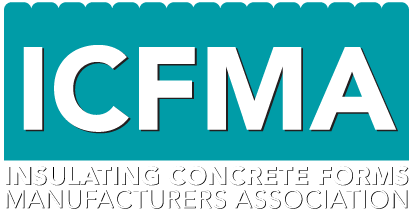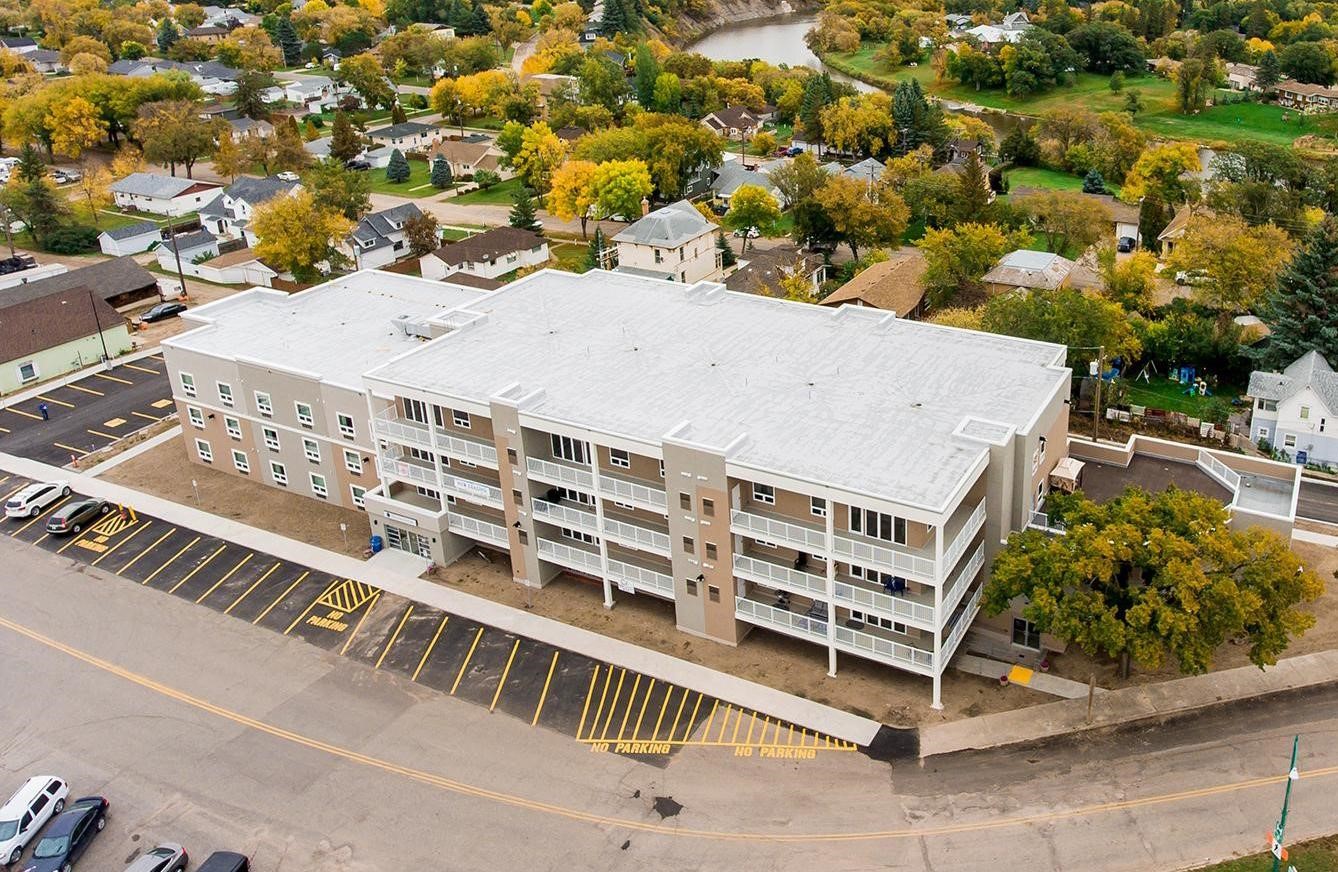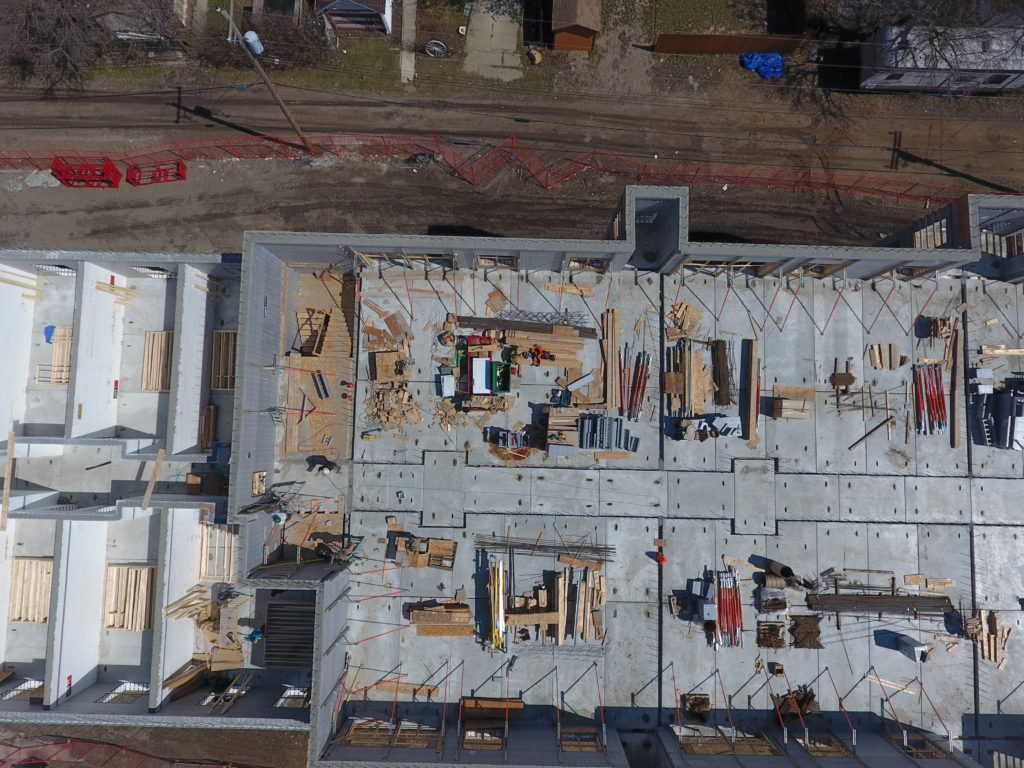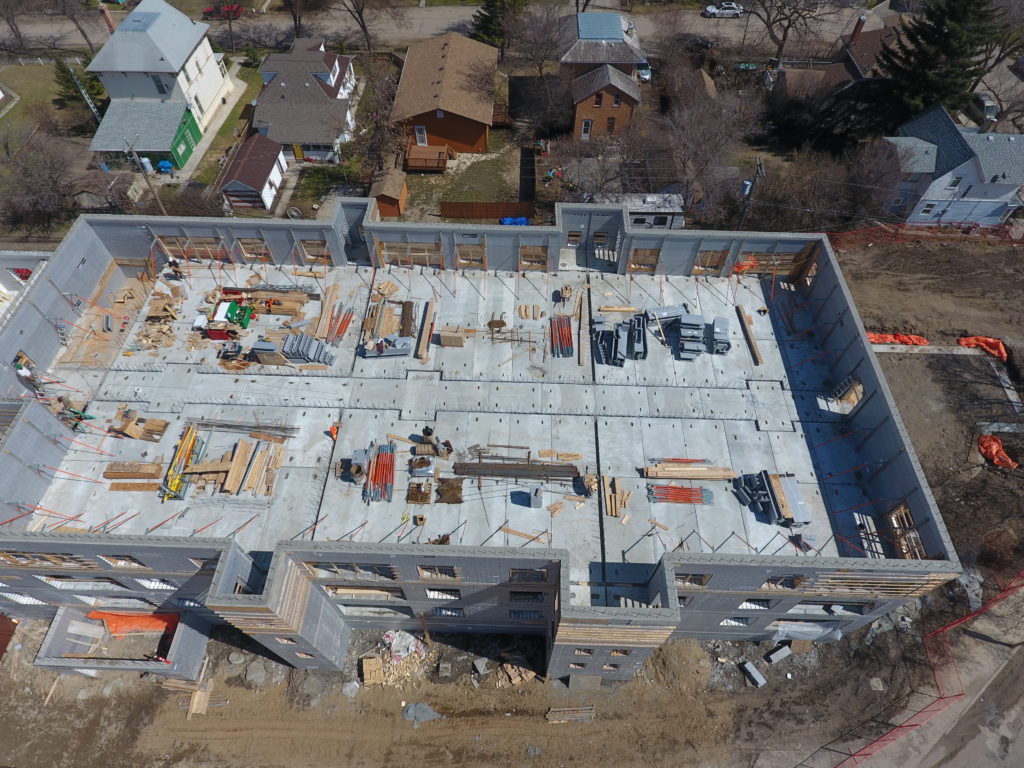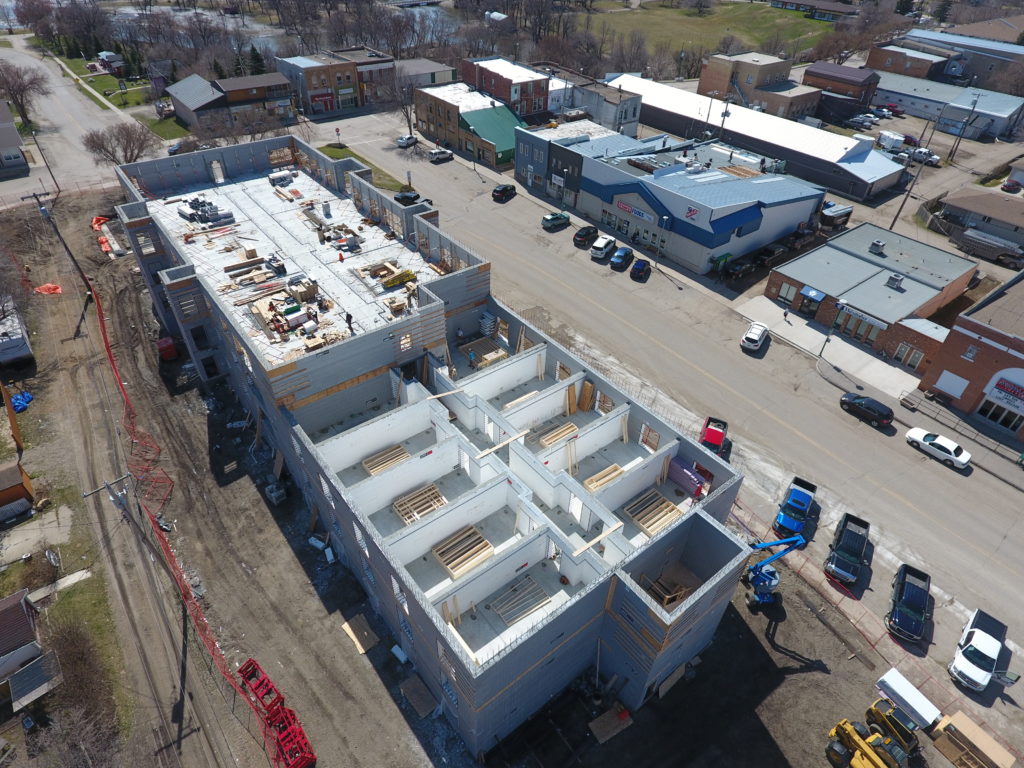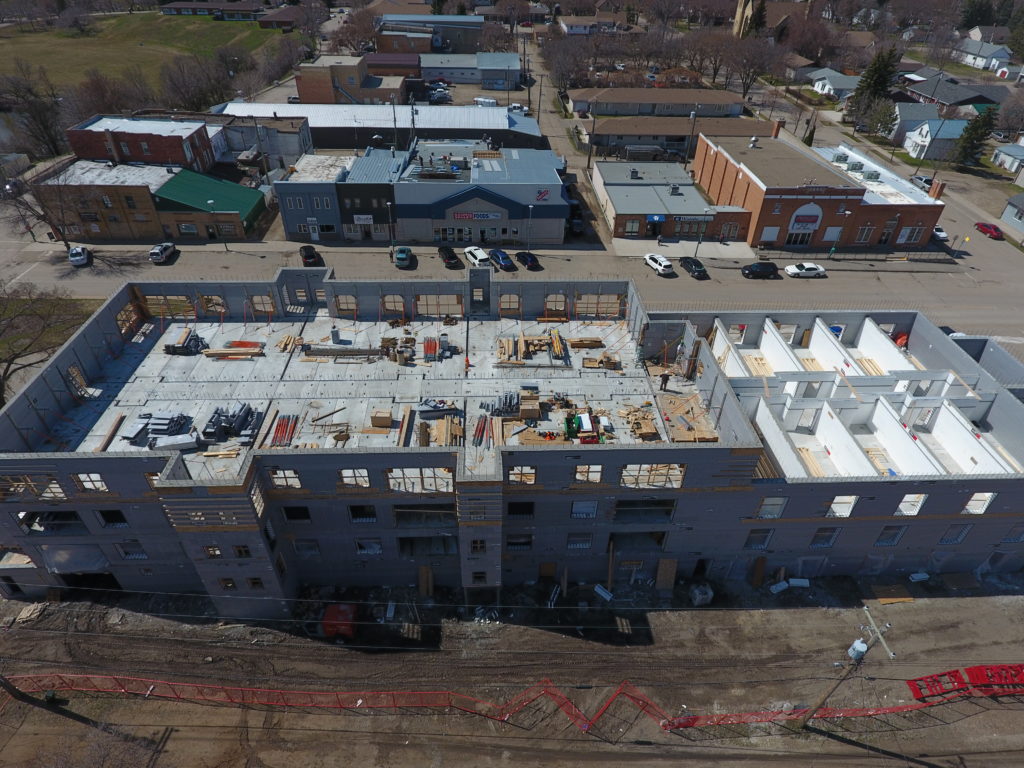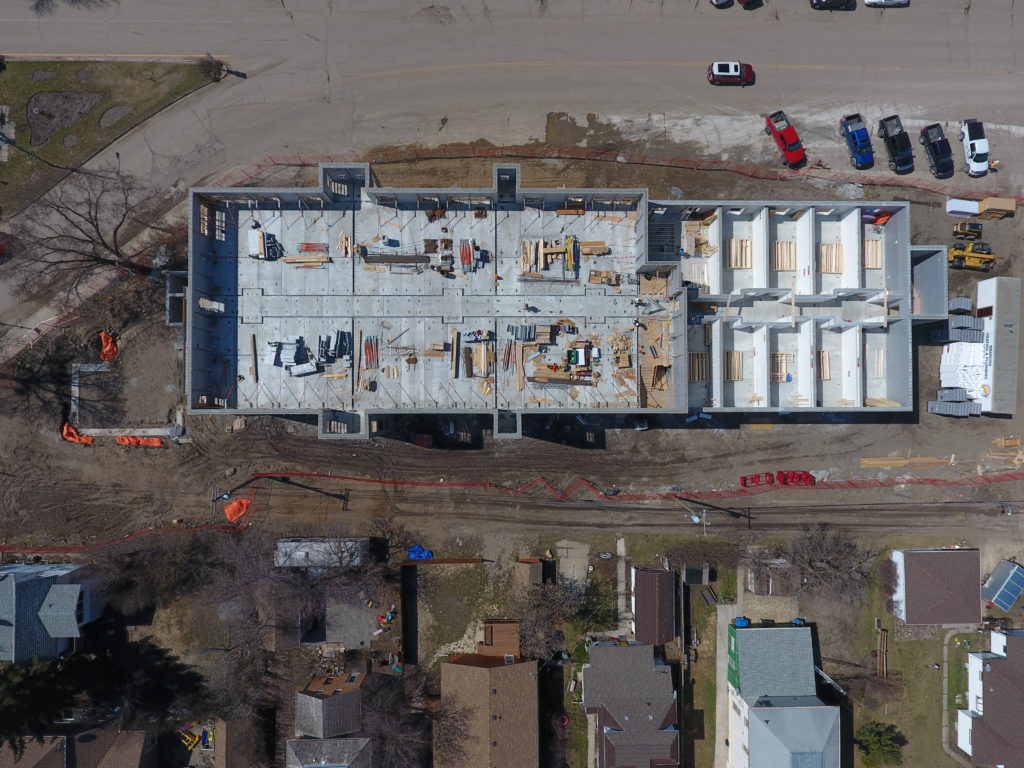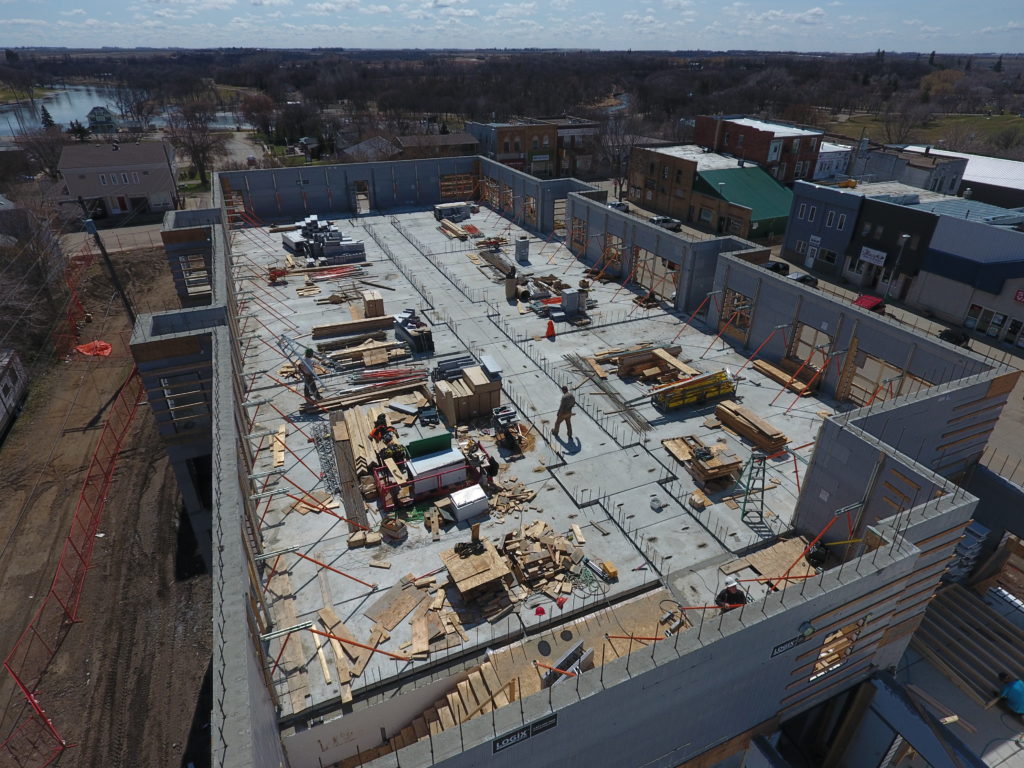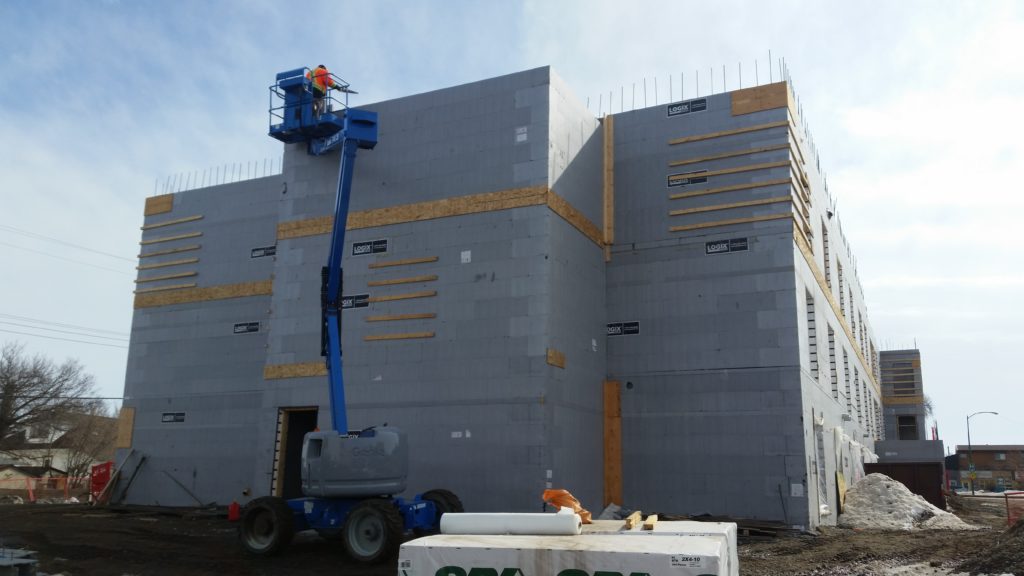Building with comfort in mind? What’s the best choice of materials if you want to build a well-insulated, quiet home or building?
Perhaps you’re building for the hospitality industry. Maybe you’re approaching retirement and want to build a quiet retreat for yourself.
Whether you’re a builder, a homeowner or an architect, comfort is an important – and often times leading decision – resulting in a greater quality of life, greater productivity in workplaces and so on.
So, what’s the best option? This blog post will show you why Steel Creek Developers and Plett Construction chose insulating concrete forms – ICFs – over wood when building Souris Hotel in Manitoba.
This build was the recent recipient of the Logix ICF Awards, showcasing the most ground-breaking and innovative projects in the ICF industry.The Souris Hotel was selected out of thousands of projects across North America!
Why Steel Creek Developers Chose ICFs For Souris Hotel
First, a little about this particular project: it’s a unique build in that it’s part condo and part hotel. There’s a 3-story hotel suite with 29 rooms on one side and an 18-suite senior’s condo on the other side. This project was built by Steel Creek Developers who create projects around promoting adult active living in the community.
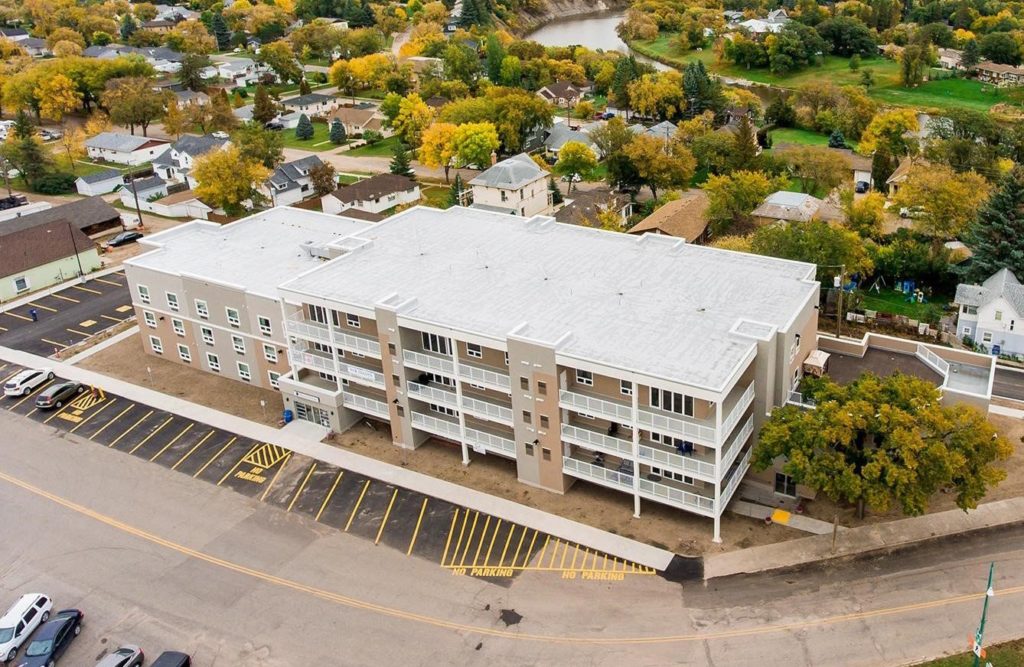
- High-Performing Wall Assembly = A Draft-Free, Comfortable Building
ICFs result in a high-performing wall assembly that simply isn’t possible with wood-framed walls.
This well-known study found that exterior ICF walls require 44% less energy to heat and 33% less energy to cool compared to walls framed with wood, even though both had a similar insulation value.
There are a few different elements that makes this possible: continuous insulation (in wood-framed walls, gaps in insulation reduce the R-value because the insulation is only effective between studs unlike ICF walls).
As for the Souris Hotel, it was built with 8” Logix Platinum R-28 exterior walls and 6” Logix Pro R-25 interior walls, resulting in not only increased efficiency but also disaster-resilience like a four-hour fire rating.
The second aspect of the wall assembly is its air-tightness. Wood-framed walls are hollow and allow air to escape through things like sheathing joints. Furthermore, walls made of wood also shrink and crack, leading to more air leakage over time.
Lastly, concrete also provides a 5-day thermal lag, which also allows residents to stay at a comfortable temperature for days, even in cold temperatures. This is simply not capable with wood-framed walls.
The result of building with ICFs? A draft-free, comfortable building.
- Concrete and Foam Absorbs More Sounds = A Quiet Building
The combination of concrete and foam absorbs sounds for a quiet building, with results clearly outperforming wood.
Most ICFs with a 6” concrete core tout a Sound Transmission Class (STC) rating of 50 to 55 compared to roughly a 38 rating for 3 ½ of fiberglass batt. In real-world application, this seemingly small difference means that ICF walls receive ¼ of the sound that wood-framed walls do.
- Positive Experience with ICFs
The ICF installer for this project also had a positive experience when building a Best Western Logix ICF hotel in 2012 which also contributed to their choice when building the Souris Hotel.
Wrapping It Up
When it comes to building with comfort in mind, ICFs are the clear winner. That’s exactly why Steel Creek Developers went with ICFs for the Souris Hotel (Steel Creek Developers also plan to build more ICF homes in the future).
Here’s why other builders also choose to build with ICFs over wood.
Of course, comfort is only one benefit of building with ICFs, and there are many more. This particular project also came in at budget ($163 per sq ft) and was able to built during winter, resulting a faster build.
Content provided by: Andy Lennox, President at Logix Brands Inc
